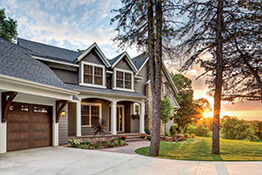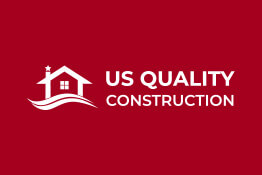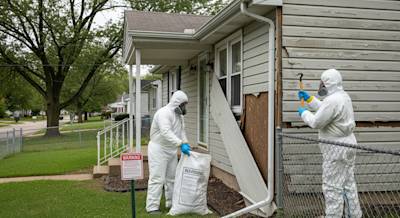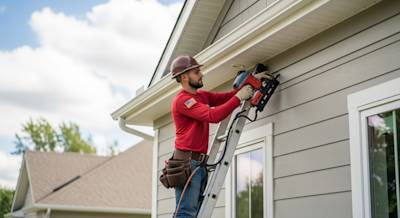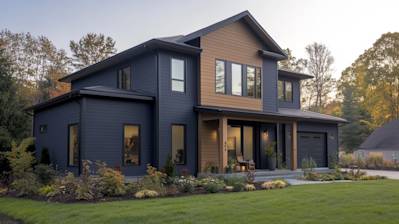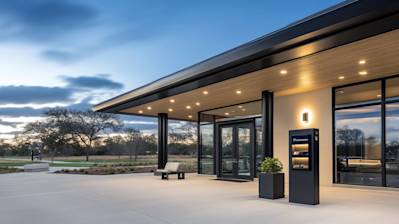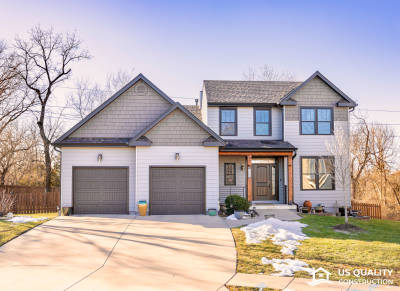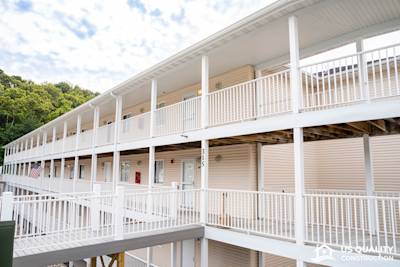The construction industry is ripe with a myriad of siding options, each with its own unique appeal and benefits. However, one stands out as a timeless classic — clapboard siding. Heralded for its aesthetic versatility and unrivaled durability, clapboard siding, also known as beveled or lap siding, remains an all-time favorite amongst homeowners and builders alike.
In this detailed blog post, we'll dive into the world of clapboard siding, exploring its vital facets from what it is, how it's made, and how it fares in terms of maintenance, durability, and cost.
The Allure of Clapboard Siding
Clapboard (or lap) siding is a specific type of siding characterized by overlapping horizontal wooden planks. They-date back to the colonial period, earning an esteemed place in architectural history. Today, due to advancements in technology, clapboard siding comes in various materials without sacrificing its signature look.
Understanding Clapboard Siding: Materials Galore
Traditionally, clapboard siding was exclusively wooden. Today, you can find clapboard siding in a range of materials, including:
- Wood
- Vinyl
- Fiber cement
- Aluminum
Each material varies in terms of durability, maintenance, cost, and environmental impact.
Wooden Clapboard Siding
As the original material for clapboard siding, wood offers an unrivaled natural charm and warmth. Homeowners can choose from diverse species, including cedar, pine, redwood, and spruce.
Vinyl Clapboard Siding
Vinyl clapboard siding provides an affordable, low maintenance alternative. It's resistant to wear and tear and comes in a broad spectrum of colors.
Fiber Cement Clapboard Siding
Fiber cement, comprising of wood pulp, cement, clay, and sand, offers an eco-friendly, fire-resistant option. It mimics the look of natural wood but requires less maintenance.
Aluminum Clapboard Siding
Resistant to rot and insects, aluminum clapboard siding serves as an excellent low-maintenance alternative. With powder-coated finishes, it can effectively mimic wood texture.
Installation: The Importance of Professional Handling
Adopting a unique horizontal overlapping technique, clapboard siding installation requires craftsmanship and experience. For best results and longevity, consider reaching out to professional contractors.
Durability and Maintenance of Clapboard Siding
When it comes to longevity, clapboard siding shines, especially with the right care. It can withstand harsh weather, resist insects, and stay vibrant for years. Nevertheless, maintenance efforts depend heavily on the material. Wooden clapboard, for instance, requires regular painting and sealing, while vinyl can be power washed once every 3-4 years.
Clapboard Siding Cost: An Overview
The cost of clapboard siding varies dramatically depending upon the material used. Here's a rudimentary breakdown of what you can expect:
- Wood: $5 to $10 per square foot
- Vinyl: $3 to $8 per square foot
- Fiber cement: $4 to $11 per square foot
- Aluminum: $3 to $6 per square foot
Remember, these costs may vary depending on the geographical location and installation charges.
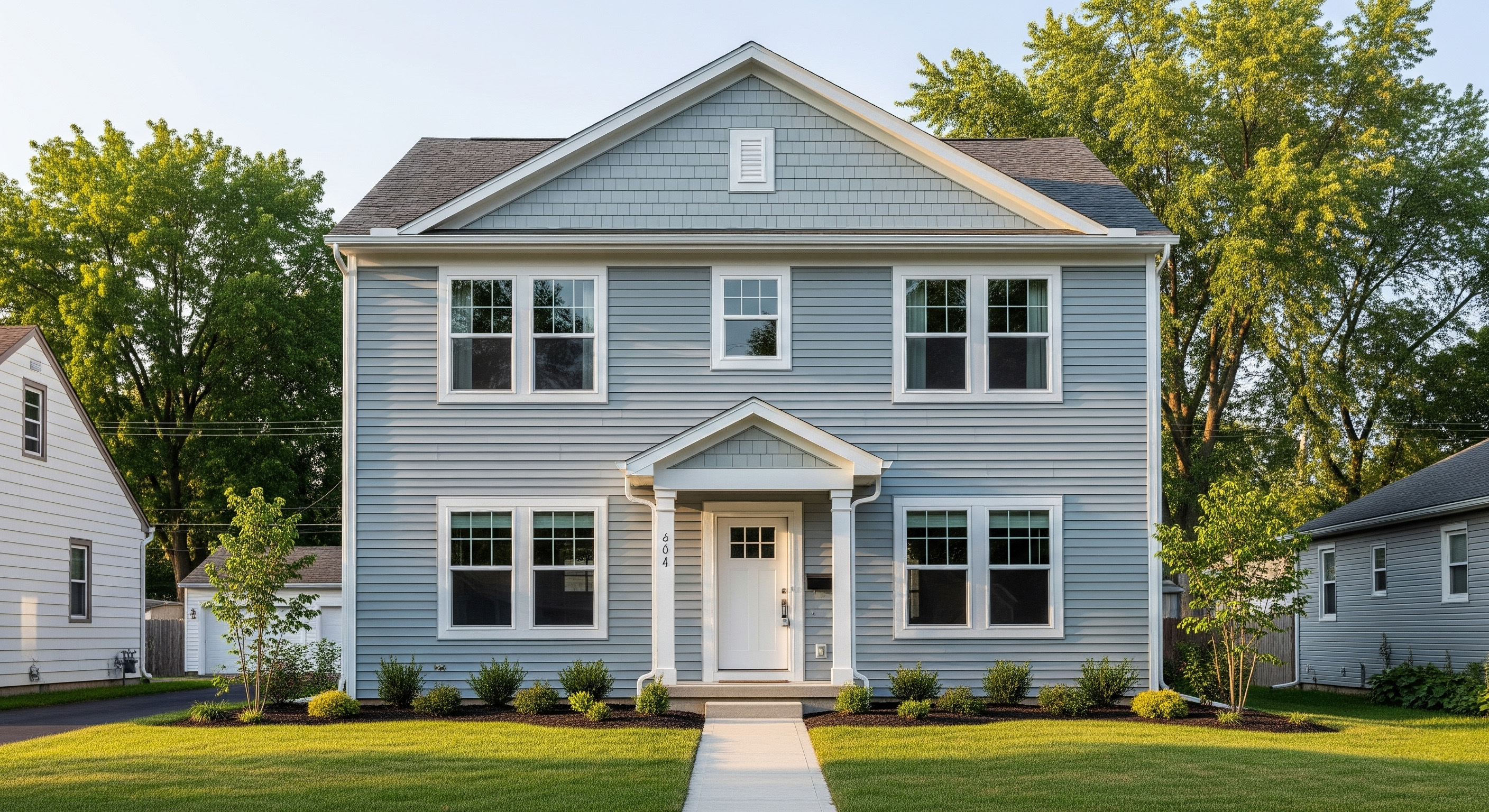
Frequently Asked Questions about Clapboard Siding
Are there different types of clapboard siding?
Yes, clapboard siding can vary in terms of the type of wood used, the finish (like paint or stain), and the way the boards are cut. For example, traditional clapboard is made from solid wood and cut at an angle to create a beveled effect. Engineered wood clapboard siding is made from wood chips and resin, and vinyl clapboard siding is made from plastic. Each type has different properties that make it better suited for certain climates or aesthetic preferences.
How is clapboard siding installed?
Installation of clapboard siding generally starts from the bottom of the house and works up, with each board overlapping the one below it. This is often completed with either nails or screws. Although the installation process is relatively straightforward, it's recommended to have it done by a professional to ensure proper alignment and weatherproofing.
What kind of maintenance does clapboard siding require?
Clapboard siding requires regular maintenance to keep it looking its best and protect it from the elements. Proper maintenance includes regular painting or staining to seal the wood and protect it from moisture, as well as checking for and repairing any damage or areas where the boards have come loose. The level of maintenance required can depend on the type of wood used and the local climate.
Can you paint clapboard siding?
Yes, absolutely! Clapboard siding can be painted to any color you desire. In fact, painting is recommended, as it provides an additional layer of protection against the elements. It's important to properly prepare the surface by cleaning and possibly sanding it before applying the paint.
Does clapboard siding warp over time?
All wood products can warp over time due to changes in temperature and humidity. However, if properly installed and maintained, clapboard siding is less likely to warp than many other types of siding. Certain types, such as engineered wood or vinyl clapboard siding, are more resistant to warping.
How durable is clapboard siding?
Clapboard siding is known for its durability, lasting many years even in harsh weather conditions. However, its longevity can be greatly influenced by several factors including the type of wood used, whether it's correctly installed, and how well it's maintained. Quality clapboard siding, when well maintained, can last for 50 years or more.
Is clapboard siding environmentally friendly?
Clapboard siding can be an environmentally friendly choice, depending on certain factors. For example, if the wood is sourced from sustainably managed forests, it can actually help to reduce the amount of carbon in the atmosphere. However, other factors like the manufacturing process, the life span of the siding, and how it's disposed of at the end of its life can also impact its environmental footprint.
How does clapboard siding compare to other types of siding?
Clapboard siding is a popular choice for its classic, timeless look and its durability. It can be more expensive and require more maintenance than some other options, like vinyl siding, but many homeowners find it's worth it for the aesthetic appeal. Also, unlike some types of siding, clapboard can be repainted, allowing you to change the look of your home over time.

Pros of Clapboard Siding
Authenticity
Because clapboard siding (also known as bevel or lap siding) is one of the oldest types of exterior siding, it lends any home a classic, authentic look. This siding style is particularly appropriate for older or historic homes, but it can also add a touch of timeless charm to more modern architecture.
Variety of Options
Clapboard siding can be made from a variety of materials, including solid wood, engineered wood, fiber cement, vinyl, and even aluminum. This wide range of options means homeowners can choose the look and feel that best suits their personal taste and the architectural style of their home.
Customization
The clapboard siding allows homeowners to customize their home exterior as per their color preference. With the options of painting or staining, this siding is capable of presenting a diverse range of looks.
Durability
Despite its thin, flat-plank appearance, clapboard siding is moderately durable. Especially when made from solid wood, engineered wood, or fiber cement, this exterior cover can last anywhere from 20 to 50 years.
Resale Value
With its classic appeal and potential longevity, clapboard siding can also boost a home's resale value. Potential buyers may appreciate not just the look but also the durability of lap siding.
Cons of Clapboard Siding
Maintenance
One of the significant downsides of clapboard siding is the high level of maintenance it requires. Depending on the material, it may need regular painting or staining to protect it from the elements and keep it looking its best. If the siding is made from wood, it may also be susceptible to rot, insects, and other forms of damage, furthering the need for frequent inspections and maintenance.
Cost
The initial cost of installing clapboard siding can be high, particularly if you opt for a higher-end material like solid wood or fiber cement. Even engineered wood and vinyl can be pricy, particularly when you factor in installation costs.
Environmental Impact
Certain types of clapboard siding have a high environmental impact. For instance, solid wood siding contributes to deforestation, while the production of vinyl siding involves the release of harmful chemicals.
Potential for Water Damage
Because clapboard siding involves overlapping strips of material, there's a potential for water to seep in through these gaps. If the water isn't promptly and properly addressed, it can lead to problems like rot and mold growth.
Less Energy Efficient
In comparison to other types of siding, such as insulated or thermal siding, clapboard is less energy efficient. It does not provide the same degree of thermal insulation, potentially leading to higher heating and cooling costs.
Myths and Misconceptions about Clapboard Siding
Clapboard siding, also known as weatherboard or lap siding, is a popular choice for many homeowners due to its distinctive style, natural durability, and traditional appeal. However, despite its popularity, clapboard siding is surrounded by several myths and misconceptions that often lead individuals to make uninformed decisions about its use and care. This comprehensive guide aims to debunk these misconceptions and provide the right perspective on clapboard siding.
Clapboard Siding Is Outdated
One of the common misconceptions about clapboard siding is that it's outdated, and modern materials have surpassed it. While newer materials like vinyl or fiber cement have become trendy, clapboard siding carries a timeless beauty that remains appealing for traditional, colonial, and even some contemporary home designs. The ability to paint it any color also allows it to fit into any decade or architectural style.
Clapboard Siding Requires Constant Maintenance
Many people believe that clapboard siding demands constant, labor-intensive maintenance. It's true that all types of siding, including clapboard, require some degree of upkeep. However, the maintenance isn't as taxing as some people would have you believe. Regular inspections for damage, timely repairs, and periodic painting or staining can keep the clapboard siding in excellent condition for years.
Clapboard Siding Is Not Durable
Another widely held misconception is that clapboard siding isn't durable. This probably stems from seeing old, poorly maintained houses where the siding has rotted or peeled off. The truth is, when well-maintained, clapboard siding can last for decades. Its natural resistance to major temperature fluctuations, wind, and precipitation makes it a highly durable choice for most climates.
Impact of Material on Durability
It's important to note that the durability of clapboard siding is also heavily influenced by the type of wood used. Hardwoods like cedar and redwood are more resistant to decay and insects and tend to last longer than softer woods.
Clapboard Siding Doesn't Offer Enough Insulation
Many homeowners are under the impression that clapboard siding falls short in providing adequate insulation. However, like other forms of siding, the insulation capacity of clapboard siding is heavily dependent on the underlying material and the presence of additional insulating layers installed underneath it. Properly installed clapboard siding with adequate supporting insulation can effectively prevent heat loss and contribute to energy efficiency.
Clapboard Siding Is Susceptible to Pests
While it's true that wood can be a target for pests, this does not mean that clapboard siding is an automatic pest magnet. Treatments are available to make the siding resistant to insects, and regular maintenance and inspections can easily catch and address any potential issues before they become major problems.
All Clapboard Siding Looks the Same
The belief that all clapboard siding looks the same comes from a misunderstanding of the product's variety. Clapboard siding can be made of different wood species, each with its unique grain patterns and color, and can be painted or stained in any color. Additionally, the width and angle of the 'clap' can also vary, allowing for numerous aesthetic possibilities.
Clapboard Siding Is Bad for the Environment
Some people might believe that using clapboard siding equates to chopping down an undue number of trees and is hence not sustainable. But this isn’t always the case. Many types of wood used for clapboard siding are sourced from sustainably managed forests. Furthermore, wood is a renewable resource, and old siding can often be repurposed or recycled, reducing waste.
Clapboard Siding Is Expensive
While clapboard siding can have a higher upfront cost compared to some options like vinyl siding, considering its lifespan, aesthetics, and the potential added home value, it's often a cost-effective investment in the long run. It's crucial to look beyond the initial cost and consider the big picture when evaluating the cost-effectiveness of clapboard siding.
Breaking down these myths and misconceptions about clapboard siding provides a clearer understanding of what it truly offers. This information will help homeowners make more informed decisions, taking into account their budget, aesthetic preferences, and maintenance inclination.
Summary
So, there we have it - clapboard siding is definitely worth considering if you're looking to add both charm and value to your home. It's not only aesthetically pleasing, often featuring in the quaint and lovely visuals we associate with classic American homes; it's also incredibly durable! When treated and maintained properly, clapboard siding can certainly stand the test of time, providing your home with a protective layer for several years.
One great thing about clapboard siding is the variety it brings to the table. You can choose from different kinds of wood, each with their own unique set of qualities, and you can even opt for pre-painted or pre-primed boards. This flexibility ensures you can match your siding to the rest of your house and really make it your own. This aspect of customizability is often a huge selling point for homeowners when they're making their decision.
Comparatively, despite its seemingly high initial cost, clapboard siding is an investment that often pays for itself over the years. The longevity and beauty it provides, coupled with the protection it offers to the structure of your home, make it a leading choice for homeowners. All in all, if you're looking for a type of siding that combines strength, beauty, and personalization, clapboard siding is a smart choice to consider.
About US Quality Construction
Welcome to US Quality Construction! Based in the heart of Kansas City, MO, we're more than just a construction company. We're committed to constructing dreams into reality. With years of experience under our tool belts, we've been honing in on our craft, perfecting our services, and most importantly, building quality relationships with our customers. Our team is seasoned with professionals, dedicated to providing you with exceptional services and unsurpassable outcomes. Whether your project is small or large, residential or commercial, we value all assignments. After all, it's not just about construction; it's about constructing with quality. We're not only helping to build Kansas City one building at a time, but we're also assisting in building a stronger community.
Tags: house siding, exterior renovation, wood paneling,
